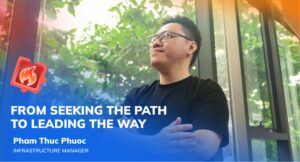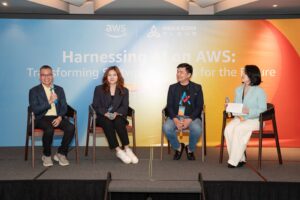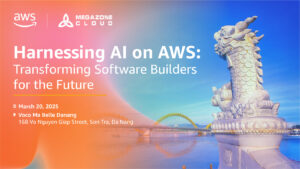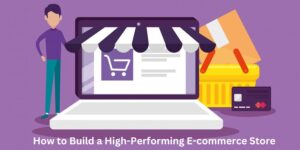IP-Based vs. Cloud-Based Fast Channel Playout Systems
05/01/2024
1.02k
Table of Contents
Since the digital disruption brought by Netflix to the entertainment industry, how content is delivered to your screens has revolutionized. Traditional methods make way for more nimble and efficient systems, particularly in FAST channel playout. Today, let’s dig deeper into the differences between two cutting-edge technologies: IP-based and cloud-based FAST channel playout systems. The comparison is based on 9 main criteria as follows:

1. Infrastructure: Where the Magic Happens
When it comes to infrastructure, these systems dance to different beats. An IP-based playout system is like delivering your entertainment through a local network. It relies on on-premise hardware and software, which means the equipment is right there with the broadcaster.
On the other hand, cloud-based playout is like taking a trip to the digital skies. It leverages the power of cloud computing for storing, processing, and delivering content. Think of it as your favorite shows floating somewhere in the nebulous realm of the internet.
2. Scalability: Flexing for the Future
Imagine your favorite TV channel suddenly gaining immense popularity. In the IP-based realm, scalability might hit a road bump. It relies on the physical constraints of on-premise hardware, making sudden growth like squeezing a giraffe into a Mini Cooper.
Now, picture the same scenario in the cloud. Cloud-based playout is the superhero of scalability. Need to accommodate more viewers or launch additional channels? Just dial up the cloud resources, and you’re good to go. It’s like having an ever-expanding digital universe at your disposal.
3. Flexibility: The Shape-Shifting Broadcast
Flexibility is the game’s name, and here’s where the two systems reveal their cards. IP-based playout offers flexibility but often involves a hefty investment and time for upgrades. It’s akin to remodeling your house to accommodate new furniture—you get the flexibility, but it comes at a cost.
Now, shift your gaze to the cloud. Cloud-based playout embodies flexibility from the get-go. It’s like having a virtual studio that can quickly adapt to your needs. No major construction is needed; it’s more like rearranging the furniture effortlessly.
4. Cost: The Budgetary Balancing Act
Money matters and broadcasters are always on the lookout for cost-effective solutions. IP-based playouts can be a bit of a high roller. Upfront costs for hardware and software can feel like buying a mansion. And let’s not forget the ongoing expenses for maintenance and upgrades—it’s like having a luxurious property that demands constant care.
Enter the cloud, the budget-friendly alternative. Cloud-based playout often follows a pay-as-you-go model, reducing the initial financial hit. Operational costs are based on how much you use, making it more accessible for smaller broadcasters. It’s like renting a sleek apartment—you only pay for what you need.
5. Redundancy and Reliability: Keeping the Show Going
Nobody likes a showstopper, especially when it comes to broadcasting. In the world of IP-based playout, redundancy needs to be meticulously built into the hardware. It’s like having a backup generator for your house—you better hope it kicks in when you need it.
Now, imagine the cloud as your superhero sidekick. Cloud-based playout often comes with built-in redundancy and high availability. Data is scattered across multiple servers and locations, ensuring your show continues even if one part of the cloud experiences turbulence.
6. Latency: The Need for Speed
Latency, or the time lag between sending and receiving data, is crucial for live broadcasts. IP-based playout usually boasts lower latency compared to traditional broadcasting. It’s like having your favorite sports game streamed in real time with minimal delay.
Cloud-based playout, however, might introduce a tiny time hiccup. The distance between the broadcaster and the cloud data center can play a role. It’s like watching the game from a skybox—you’re close, but there’s still a bit of distance.
7. Security and Compliance: Guarding the Gates
Security is paramount in the digital realm, and both systems have ways of locking down the fort. Security measures must be implemented at the local network level in IP-based playouts. It’s like having a sturdy fence around your property—safe, but you must ensure no one breaches it.
Now, think of the cloud as a fortress guarded by experts. Cloud providers often implement robust security measures and hold certifications for compliance. Broadcasters share the responsibility with the cloud provider, creating a joint defense strategy.
8. Accessibility: Anytime, Anywhere
In the age of remote work and global collaboration, accessibility is a trailblazer. IP-based playout has its limits—it’s accessible primarily within the local network or through Virtual Private Networks (VPNs). It’s like being tied to your hometown; you can only watch your favorite local channels from there.
On the flip side, cloud-based playout breaks the chains. It’s accessible from anywhere with an internet connection. Broadcasting from a beach in Bali? Absolutely. It’s like taking your shows on a world tour, reaching audiences from around the globe.
9. Making the Choice: What’s Right for You?
Ultimately, choosing between IP-based and cloud-based FAST channel playout systems is a bit like picking the right vehicle for your journey. If you value control, have the resources for a local adventure, and want lower latency, an IP-based system might be your trusty sedan. On the other hand, if you crave flexibility, scalability, and a budget-friendly ride to the cloud, then the cloud-based option might be your sleek electric car.
Ultimately, it’s about finding the system that aligns with your broadcasting needs, goals, and aspirations. The airwaves are evolving, and with IP-based and cloud-based FAST channel playout systems, the future of broadcasting is both exciting and within reach. So, grab your popcorn, settle into your virtual seat, and enjoy the show wherever it comes from!
Related Blog





















